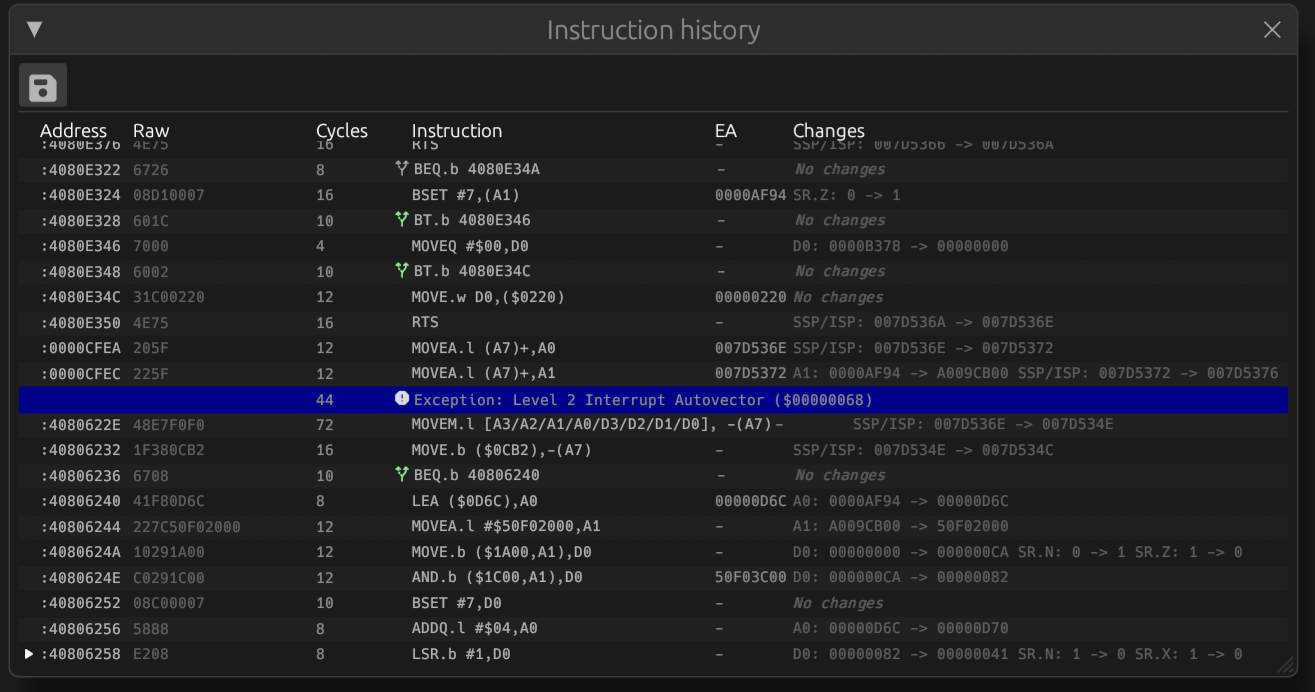Instruction history
The instruction history view shows a trace of the instructions executed by the CPU and the effect of these instructions. The instruction history view can be opened using the 'View > Instruction history' menu item.

The instruction history dialog has the following actions in the toolbar:
- save - exports the trace to a pipe-separated file.
In the table the last executed instruction is shown at the bottom. The table in the dialog shows the following columns:
- play_arrow - last instruction to be executed
- Address: the address the instruction was fetched from.
- Raw: complete instruction in hex format
- Cycles: amount of CPU clock cycles spent on this instruction.
An hourglass_top
icon indicates that wait states were incurred during instruction or data
fetch for this instruction.
If the CPU has I-cache and it is enabled, a cache state indicator will appear
in front of the cycles cell:
- speed indicates a cache hit for the entire instruction,
- speed indicates a cache hit for part of the instruction,
- speed indicates a cache miss for the entire instruction.
- Instruction: text representation of the instruction. A-line instructions are
annotated with the name of the system trap.
On branch instructions, a branch indicator shows if the branch was taken:
- alt_route indicates the branch taken,
- alt_route indicates the branch was not taken.
- EA: calculated Effective Address on which the operation of the instruction was executed. This may be empty if the instruction does not operate on memory
- Changes: a list of CPU registers and flags that were changed by the instruction
Exceptions and interrupts
If during execution an exception or interrupt is raised and the CPU jumps to the handler, a row with a blue background color is shown in the instruction history table naming the exception or interrupt that was raised and the amount of cycles taken.